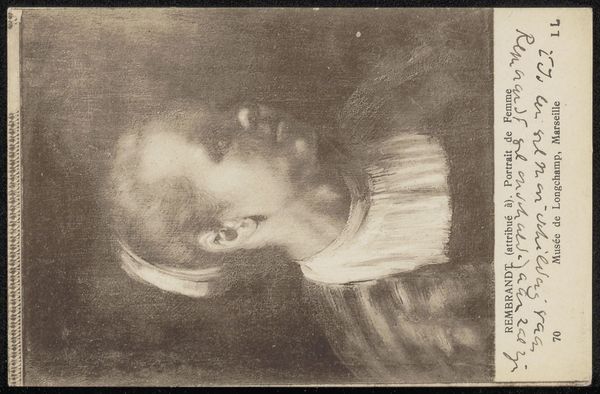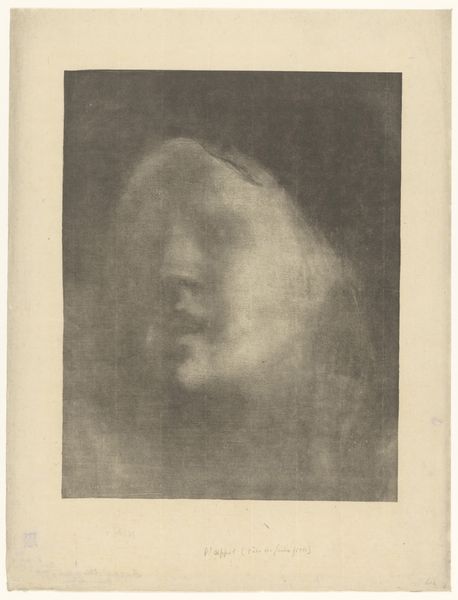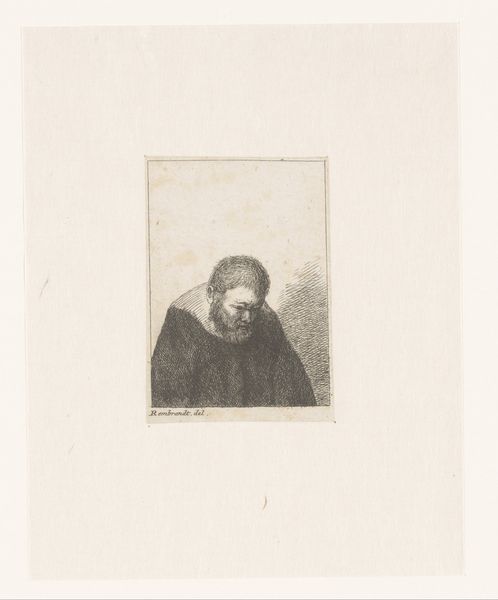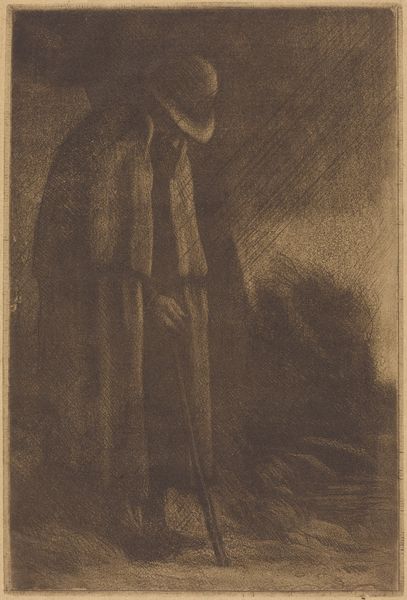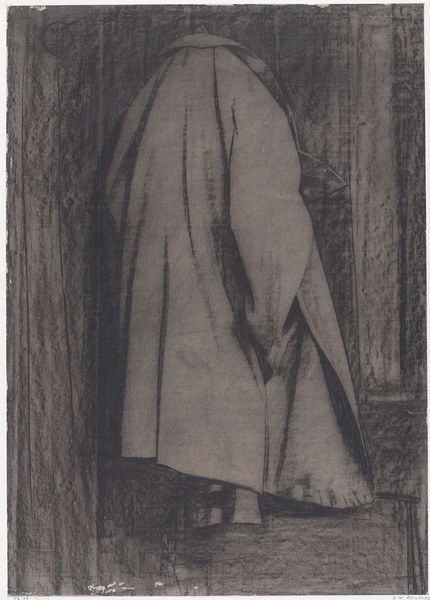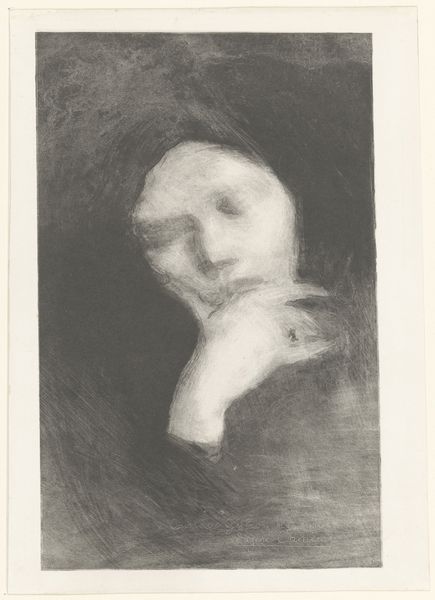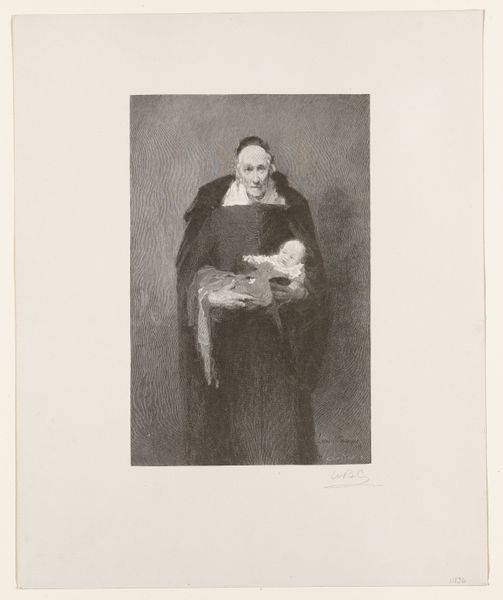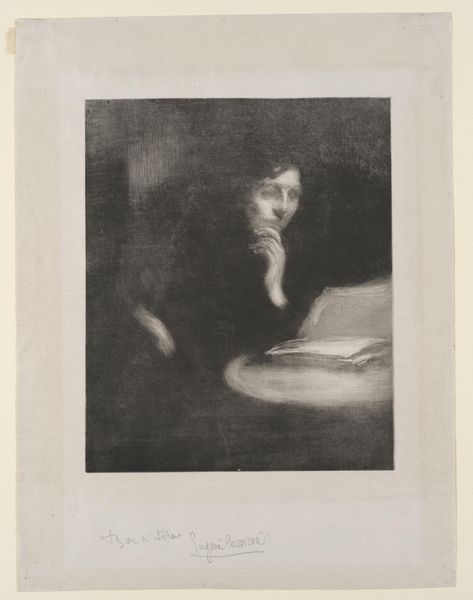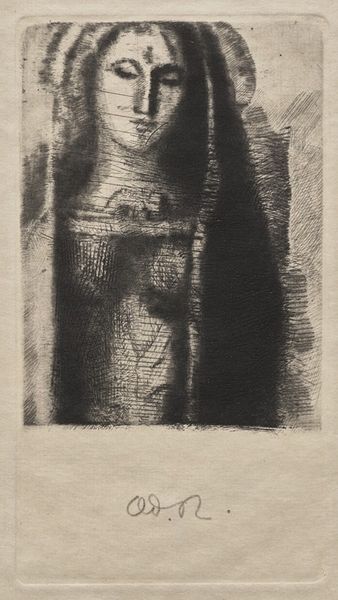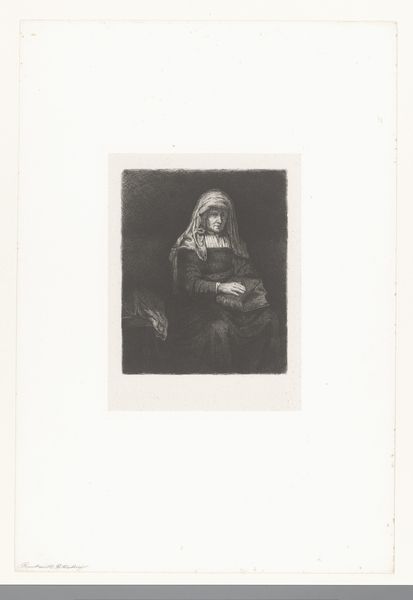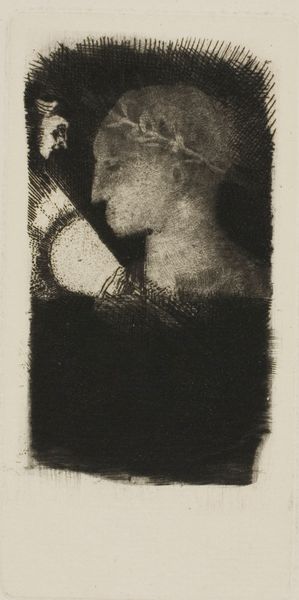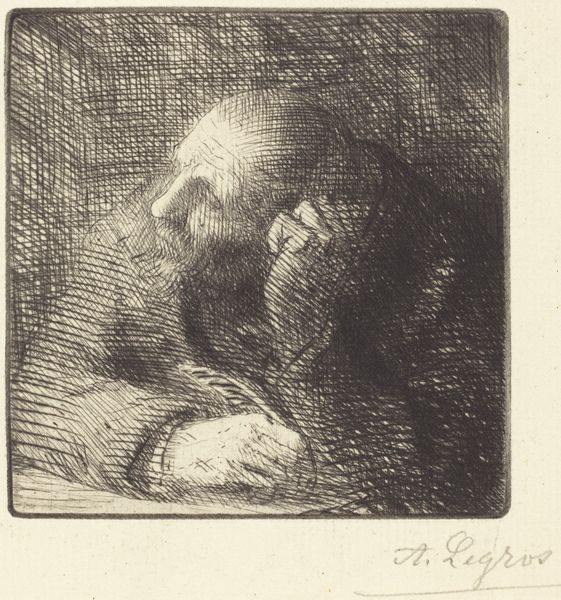
drawing, charcoal
#
portrait
#
pencil drawn
#
drawing
#
impressionism
#
charcoal drawing
#
portrait drawing
#
charcoal
#
post-impressionism
#
charcoal
Dimensions: 12 5/16 x 9 7/16 in. (31.2 x 24.1 cm)
Copyright: Public Domain
Editor: Here we have Georges Seurat’s “Embroidery; The Artist’s Mother,” created between 1882 and 1883 using charcoal. There’s such a somber, almost haunting quality to it, don't you think? What strikes you most about this piece? Curator: The darkness is undeniable, and intentionally so. Consider the period. Seurat's choice of representing his mother in near-monochrome goes beyond simple portraiture. How does the lack of bright color contribute to the mood, and what might that say about the societal expectations of mothers, particularly in that era? Editor: I hadn’t thought of it that way. It feels very intimate, like a private moment, yet also distant and unknowable because of the darkness. Curator: Exactly. The softness of the charcoal adds another layer. Think about the art world Seurat was engaging with – a world dominated by male artists and very specific depictions of women. His choice to render his mother, not as a symbol of beauty, but in quiet, introspective labor is very intentional. Can you see a parallel with other art movements of the time that critiqued traditional social norms? Editor: I suppose so! The Realists, maybe? Courbet would have painted his mother with all her wrinkles, not idealized but I guess it would still not necessarily make the point about women's work and role. Curator: Precisely! This work challenges conventional notions of maternal representation and feminine identity, suggesting that even within the private sphere, power dynamics and social conditioning play a crucial role. Considering its stark simplicity, this drawing serves as a powerful statement. Editor: I see it now. It's more than just a portrait; it’s a quiet act of defiance, in a way. Curator: Precisely! By showing us the emotional and social dimensions of his mother's existence, Seurat pushes us to examine broader social structures and gendered assumptions of his time. I had not thought of Realism, it makes sense too!
Comments
No comments
Be the first to comment and join the conversation on the ultimate creative platform.
